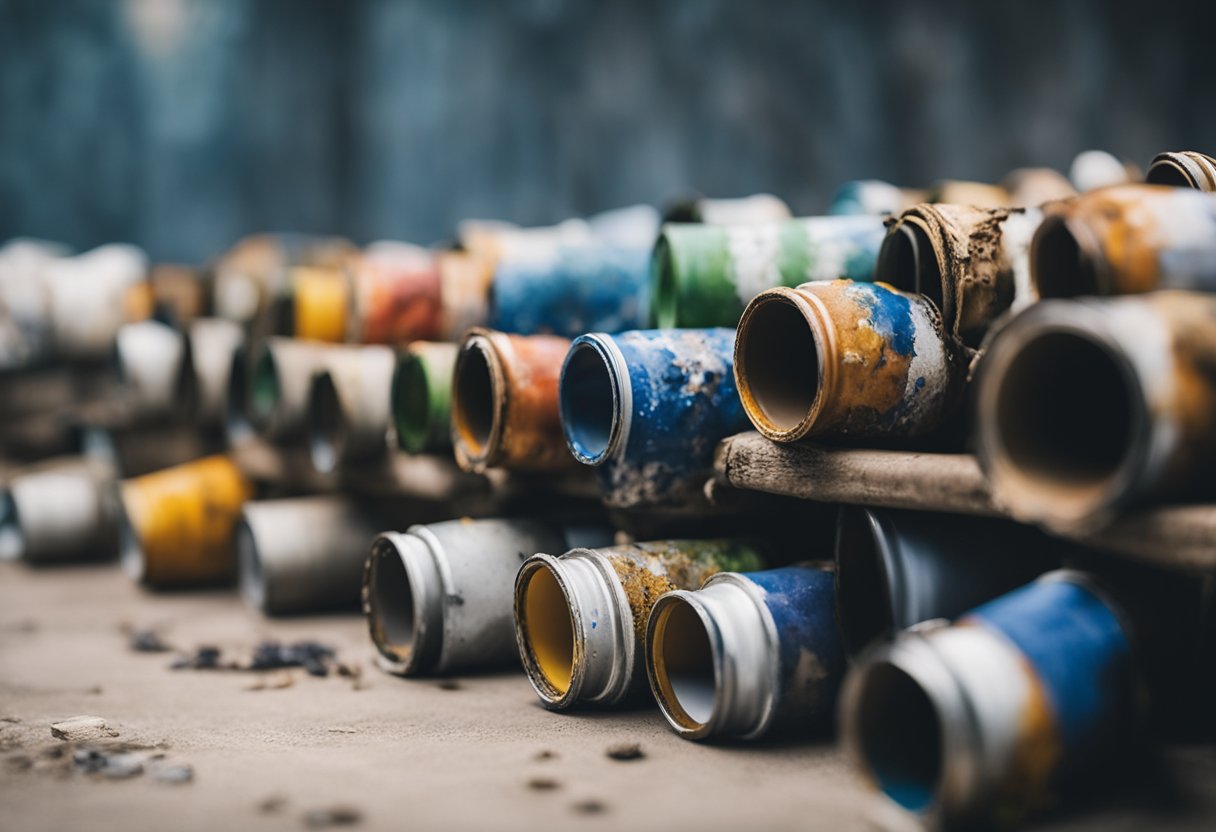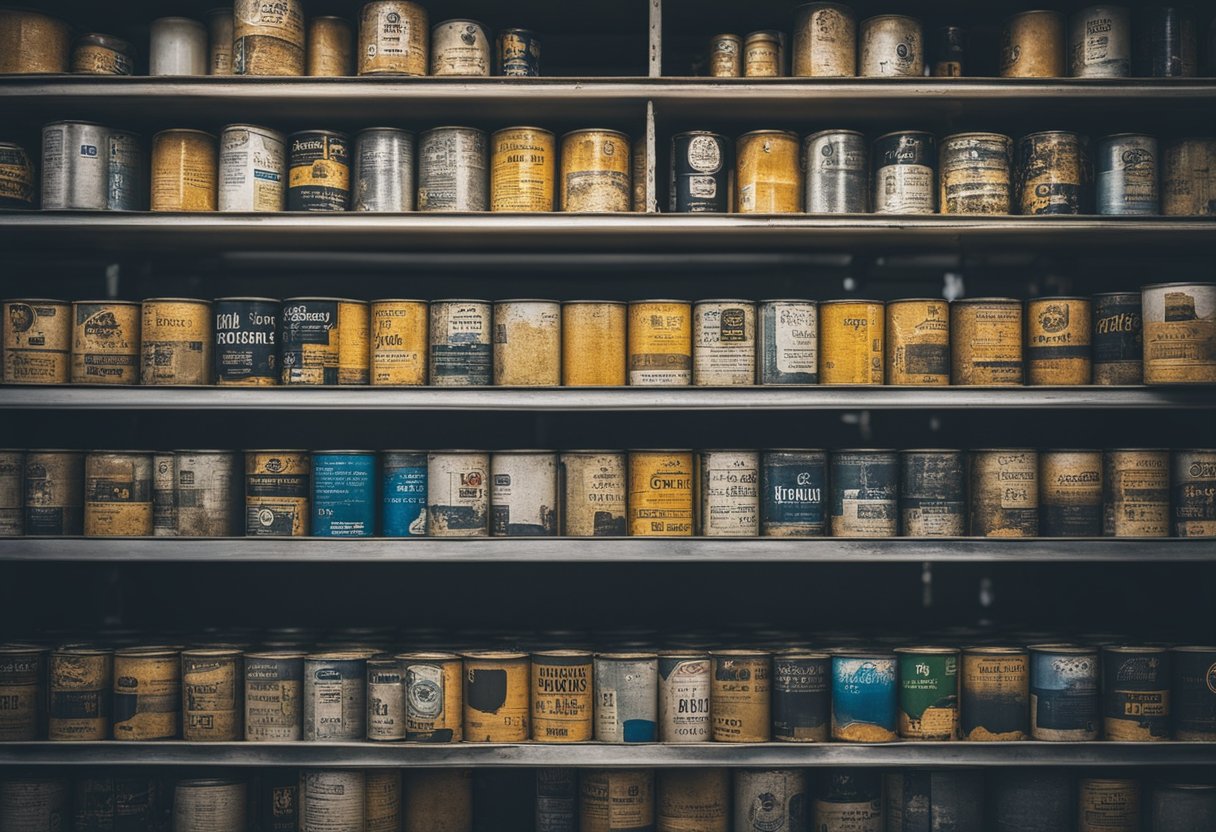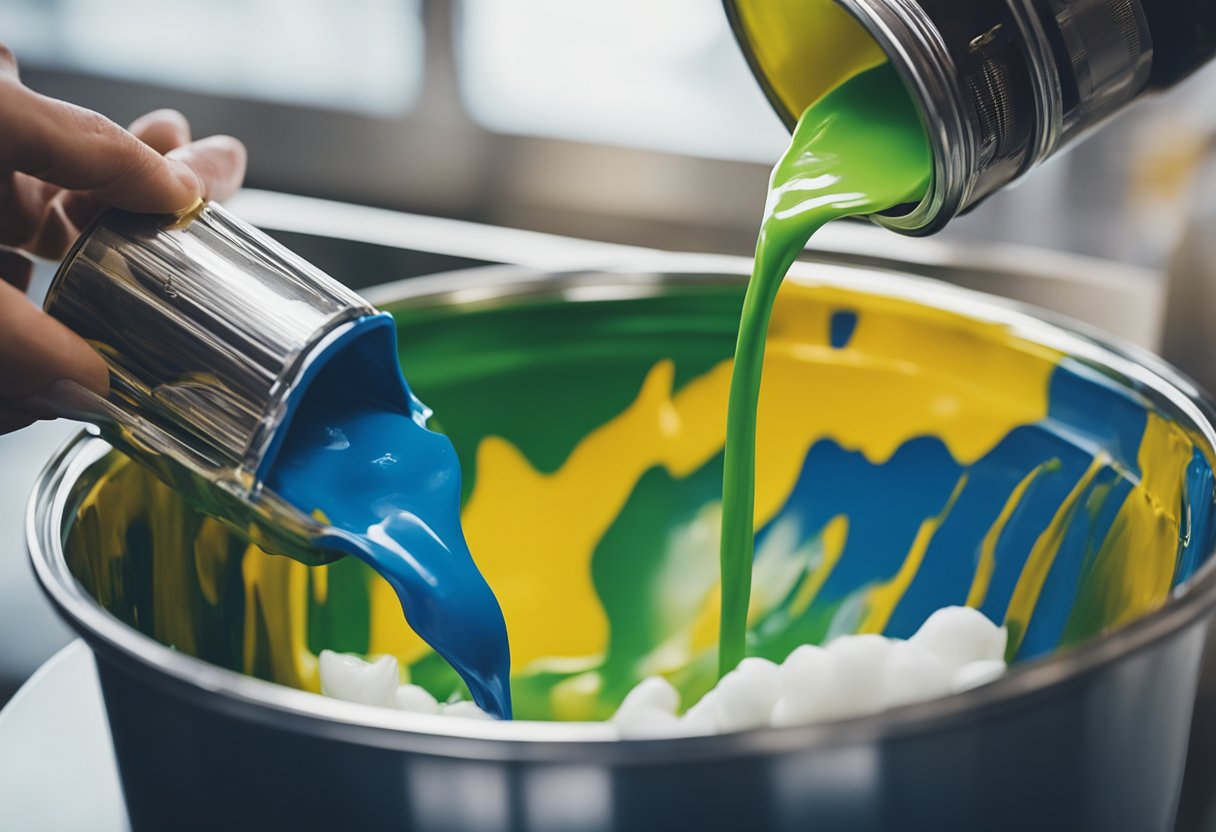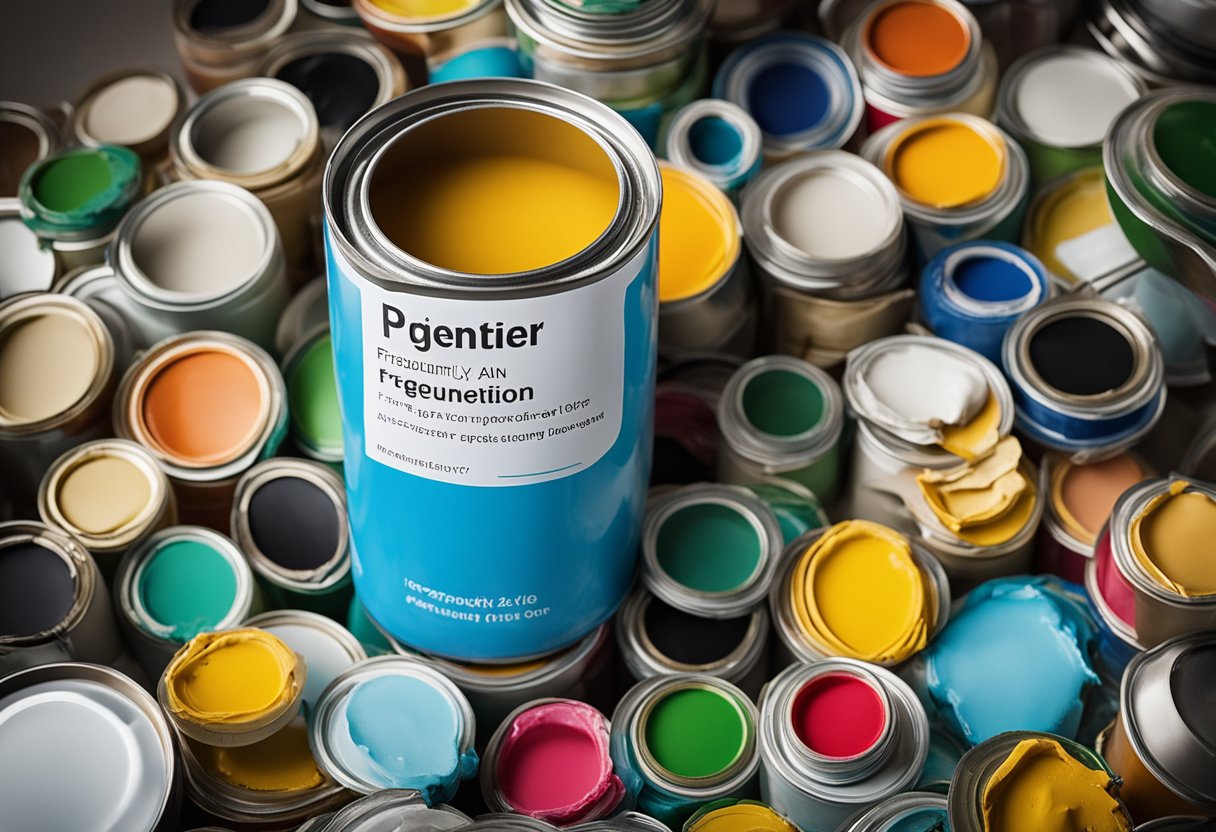As an artist, I know that it’s important to have quality materials to create beautiful artwork. One of the most popular types of paint is acrylic paint, and while it’s known for its versatility and durability, many artists wonder if it can go bad. The answer is yes, acrylic paint can go bad, but the good news is that with proper storage and care, you can extend its shelf life.

Understanding acrylic paint is the first step in knowing how to care for it. Acrylic paint is made up of pigment suspended in an acrylic polymer emulsion. This type of paint dries quickly and is water-soluble when wet, but becomes water-resistant when dry. It’s used by artists of all levels, from beginners to professionals, and is often preferred over oil paint because it’s easier to clean up and doesn’t have a strong odor.
Key Takeaways
- Acrylic paint can go bad, but proper storage and care can extend its shelf life.
- Acrylic paint is made up of pigment suspended in an acrylic polymer emulsion and dries quickly.
- To identify bad acrylic paint, look for signs of separation, mold, or a foul odor.
Understanding Acrylic Paint
Acrylic paint is a popular medium in the world of art and crafting. It is a water-based paint that uses pigment suspended in an acrylic polymer emulsion binder. This type of paint is known for its fast-drying properties, vibrant colors, and versatility.
One of the advantages of acrylic paint is that it can be used on a variety of surfaces, including canvas, paper, wood, and even fabric. It can also be mixed with other mediums such as gels and pastes to create different textures and effects.
Unlike oil-based paints, acrylic paint is water-soluble, which means it can be easily cleaned up with soap and water. It is also less toxic than other types of paint, making it a safer option for artists and crafters to use.
There are different types of acrylic paint available in the market, including student-grade and artist-grade paints. Student-grade paints are less expensive and have a lower pigment concentration, while artist-grade paints are more expensive and have a higher pigment concentration. Some popular brands of acrylic paint include Liquitex, Grumbacher, and Liquitex Basics.
It’s important to note that although acrylic paint is water-based, it is not the same as latex paint, which is commonly used for walls and furniture. Latex paint has a different binder and is not suitable for use on art surfaces.
In summary, acrylic paint is a versatile, water-based medium that is popular among artists and crafters. It uses pigment suspended in an acrylic polymer emulsion binder and is known for its fast-drying properties, vibrant colors, and ability to be used on a variety of surfaces.
Shelf Life of Acrylic Paint
As an artist who works with acrylic paints, it is important to know the shelf life of acrylic paint. Acrylic paint is a water-based medium that is known for its quick drying time and versatility. However, like most other paints, acrylic paint can go bad over time.
The shelf life of acrylic paint depends on several factors, including the quality of the paint, how it is stored, and whether it is opened or unopened. Generally, unopened acrylic paint can last for several years, while opened acrylic paint can last for up to two years.
The shelf life of acrylic paint can be extended by storing it properly. It is important to keep the paint in a cool, dry place away from direct sunlight. Acrylic paint should be stored in airtight containers to prevent air exposure, which can cause the paint to dry out and become unusable.
It is important to note that the shelf life of acrylic paint is not the same as the expiration date. The expiration date is the date by which the manufacturer guarantees the quality of the paint. However, even after the expiration date, the paint may still be usable if it has been stored properly and is in good condition.
In summary, the shelf life of acrylic paint can vary depending on several factors, but proper storage can help extend its lifespan. Unopened acrylic paint can last for several years, while opened paint can last for up to two years. It is important to store acrylic paint in a cool, dry place away from direct sunlight and in airtight containers to prevent air exposure.
Identifying Bad Acrylic Paint
As an artist, it’s important to know when your acrylic paint has gone bad. There are certain visual and olfactory indicators that can help you identify if your paint is still usable or if it’s time to dispose of it.
Visual Indicators
One of the most obvious visual indicators of bad acrylic paint is a change in consistency. If the paint has become lumpy, hard, or separated, then it may have gone bad. You may notice that the paint has become chunky or has formed lumps, which can make it difficult to apply evenly.
Another visual indicator is the appearance of the paint. If the paint has changed color or has become cloudy, then it may be spoiled. Additionally, if there are any foreign objects in the paint, such as mold or other growths, then it’s time to throw it away.
Olfactory Indicators
In addition to visual indicators, there are also olfactory indicators that can help you identify bad acrylic paint. If the paint has a sour or pungent smell, then it may have gone bad. Additionally, if the paint smells different than it did when you first opened it, then it may be time to dispose of it.
It’s important to note that some acrylic paints may have a slight odor when they are first opened, but this should dissipate quickly. If the odor lingers or becomes stronger, then it’s likely that the paint has gone bad.
In conclusion, identifying bad acrylic paint is important to ensure that your artwork is of the highest quality. By paying attention to visual and olfactory indicators, you can determine if your paint is still usable or if it’s time to replace it.
Storage and Care of Acrylic Paint
As an artist, I know that proper storage and care for acrylic paint is essential to maintain its quality and extend its shelf life. In this section, I will discuss the two main aspects of storage and care for acrylic paint: proper storage and reviving old acrylic paint.
Proper Storage
Proper storage is crucial for preserving the quality of acrylic paint. Exposure to air, light, and moisture can dry out the paint, making it difficult to work with. To prevent this, I always store my acrylic paint in a cool, dry place, away from direct sunlight and heat sources like a garage or attic.
I store my paint in airtight containers, such as plastic wrap or tightly sealed tubes, to prevent air from getting in. I also make sure to label the containers with the date of purchase to ensure that I use the oldest paint first.
Reviving Acrylic Paint
If you have leftover paint that has dried up, don’t throw it away just yet. You can revive it by rehydrating and remixing it. To do this, I use a paint stick to mix the dried paint with water or an acrylic medium until it reaches a smooth consistency.
It’s important to note that not all old acrylic paint can be revived. If the paint has been separated for a long time or has been exposed to extreme temperatures, it may not be salvageable. In this case, it’s best to dispose of the paint properly.
In summary, proper storage and care of acrylic paint is crucial for maintaining its quality and extending its shelf life. By storing the paint in a cool, dry place in airtight containers and reviving old paint when possible, you can ensure that your acrylic paint lasts for years to come.
Impact of Temperature on Acrylic Paint
As a painter, I know that the quality of acrylic paint can be affected by temperature. Acrylic paint is sensitive to extreme temperatures, both hot and cold. When exposed to high temperatures, the paint can become soft and tacky, and it may even melt. On the other hand, when exposed to cold temperatures, the paint can become thick and difficult to work with.
It is important to store acrylic paint in a cool, dry place to prevent any temperature-related issues. Extreme temperatures can cause the paint to change consistency and color, and it can even cause the paint to dry out or separate in the tube. To prevent this from happening, I always keep my paint tubes or bottles tightly sealed when not in use. This helps to prevent the paint from drying out, and it also helps to keep moisture out of the paint, which can cause mildew and mold growth.
If you live in an area where temperatures regularly drop below freezing, it is important to take extra precautions to protect your acrylic paint. When acrylic paint freezes, it can be permanently damaged. The water in the paint can expand and cause the paint to crack or separate. To prevent this from happening, I recommend storing your paint in airtight containers and keeping them in a cool, dry place.
In summary, temperature can have a significant impact on the quality and lifespan of acrylic paint. It is important to store your paint in a cool, dry place and to protect it from extreme temperatures to ensure that it remains in good condition.
Health and Safety Considerations

As an artist, it is important to consider the health and safety implications of using acrylic paint. While acrylic paint is generally considered safe, there are a few things to keep in mind to ensure that you are using it in a way that is healthy and safe for you and those around you.
One concern is the potential for mold and mildew growth in acrylic paint. This can happen if the paint is not stored properly or if it is exposed to moisture. To prevent this, it is important to keep your paint in a dry, cool place and to avoid leaving the cap off for extended periods of time. If you notice any mold or mildew growth in your paint, it is best to discard it and start with fresh paint.
Another consideration is the presence of volatile organic compounds (VOCs) in some acrylic paints. VOCs are harmful chemicals that can be released into the air when the paint is applied. To minimize your exposure to VOCs, it is important to use acrylic paints that are labeled as low-VOC or no-VOC. These paints are formulated to release fewer harmful chemicals into the air.
It is also important to be aware of any harmful or toxic ingredients that may be present in some acrylic paints. While most acrylic paints are non-toxic, some may contain heavy metals like cadmium, cobalt, and chromium. It is important to read the label carefully and to use these paints in a well-ventilated area to minimize your exposure to these harmful substances.
Finally, it is important to be aware of the potential for bacterial growth in acrylic paint. Bacteria can grow in paint that has been contaminated with dirt, dust, or other particles. To prevent this, it is important to keep your paint and painting supplies clean and to avoid using contaminated paint.
By following these simple guidelines, you can ensure that you are using acrylic paint in a way that is healthy and safe for you and those around you.
Disposal of Acrylic Paint

As with any other paint, it is important to dispose of acrylic paint properly. Improper disposal can harm the environment and lead to contamination of water sources. In addition, some states and counties have strict laws regarding the disposal of acrylic paint. Therefore, it is important to follow the guidelines provided by your local authorities.
The easiest way to dispose of acrylic paint is to let it dry out completely and then throw it away. This method is suitable for small amounts of paint. To dry out acrylic paint, you can leave it in an open container, such as a paint can, and let it air dry. The drying time can vary depending on the amount of paint and the humidity in the air. Generally, it takes about a week for acrylic paint to dry out completely. Once the paint is dry, you can dispose of it in the regular trash.
For larger amounts of acrylic paint, it is best to take it to a hazardous waste facility. These facilities are equipped to handle hazardous materials, including paint. You can contact your local authorities to find out where the nearest hazardous waste facility is located. Some facilities may charge a fee for disposing of paint, so it is important to check beforehand.
Another option for disposing of acrylic paint is to recycle it. Some areas have paint recycling drop-off centers where you can take your old paint. The paint is then recycled and used to make new paint. This is a more environmentally friendly option than throwing the paint away. You can check with your local authorities to see if there are any paint recycling centers in your area.
In conclusion, proper disposal of acrylic paint is important to protect the environment and comply with local laws. You can let small amounts of paint dry out completely and throw them away in the regular trash. For larger amounts of paint, it is best to take it to a hazardous waste facility or a paint recycling center. By following these guidelines, you can ensure that your acrylic paint is disposed of safely and responsibly.
Frequently Asked Questions

How long is acrylic paint good for once opened?
Acrylic paint can last for several years once opened, provided it is stored properly. The shelf life of acrylic paint can vary depending on the brand, quality, and storage conditions. According to Acrylicpedia, acrylic paint can last for up to 10 years if stored in a cool, dry place away from direct sunlight and heat sources. However, it’s important to note that the paint’s quality may deteriorate over time, and it may become thicker or clumpy.
Is it safe to use expired acrylic paint?
Using expired acrylic paint is generally safe, but the quality of the paint may be compromised. Expired paint may not adhere well to surfaces, and the colors may not be as vibrant as fresh paint. Additionally, expired paint may have a strange odor or contain mold or mildew. It’s best to avoid using expired paint for important projects and instead use fresh paint for optimal results.
Can acrylic paint go bad if it freezes?
Acrylic paint can be damaged if it freezes, which can cause the paint to separate or become clumpy. To prevent this, it’s important to store acrylic paint in a cool, dry place above freezing temperatures. If you suspect that your paint has frozen, allow it to thaw at room temperature and stir it thoroughly before use.
How can you tell if acrylic paint has gone bad?
There are several signs that acrylic paint has gone bad, including a thick or clumpy consistency, mold or mildew growth, a strange odor, or a separation of the paint’s components. If your paint exhibits any of these signs, it’s best to discard it and use fresh paint for your project.
How long does acrylic paint last on canvas?
Acrylic paint can last for decades on canvas if the painting is stored properly. According to The Spruce Crafts, acrylic paint is known for its durability and resistance to fading. However, factors such as exposure to sunlight and humidity can affect the lifespan of the painting.
How long does acrylic paint last on clothes?
Acrylic paint can last for several washes on clothes if the paint is heat-set properly. To heat-set acrylic paint on fabric, place the painted fabric in a clothes dryer on high heat for 30 minutes. After heat-setting, the paint should be resistant to washing and fading. However, it’s important to note that acrylic paint is not as permanent on fabric as it is on other surfaces, and it may fade or flake over time with repeated washing.

Hi, I’m Sal Muller of Tooltrip.com. My DIY experience led me to understand essential power tools for home projects. Tooltrip.com guides enthusiasts and professionals in choosing right tools for any job. I provide concise top tool reviews for easier, efficient DIY.

